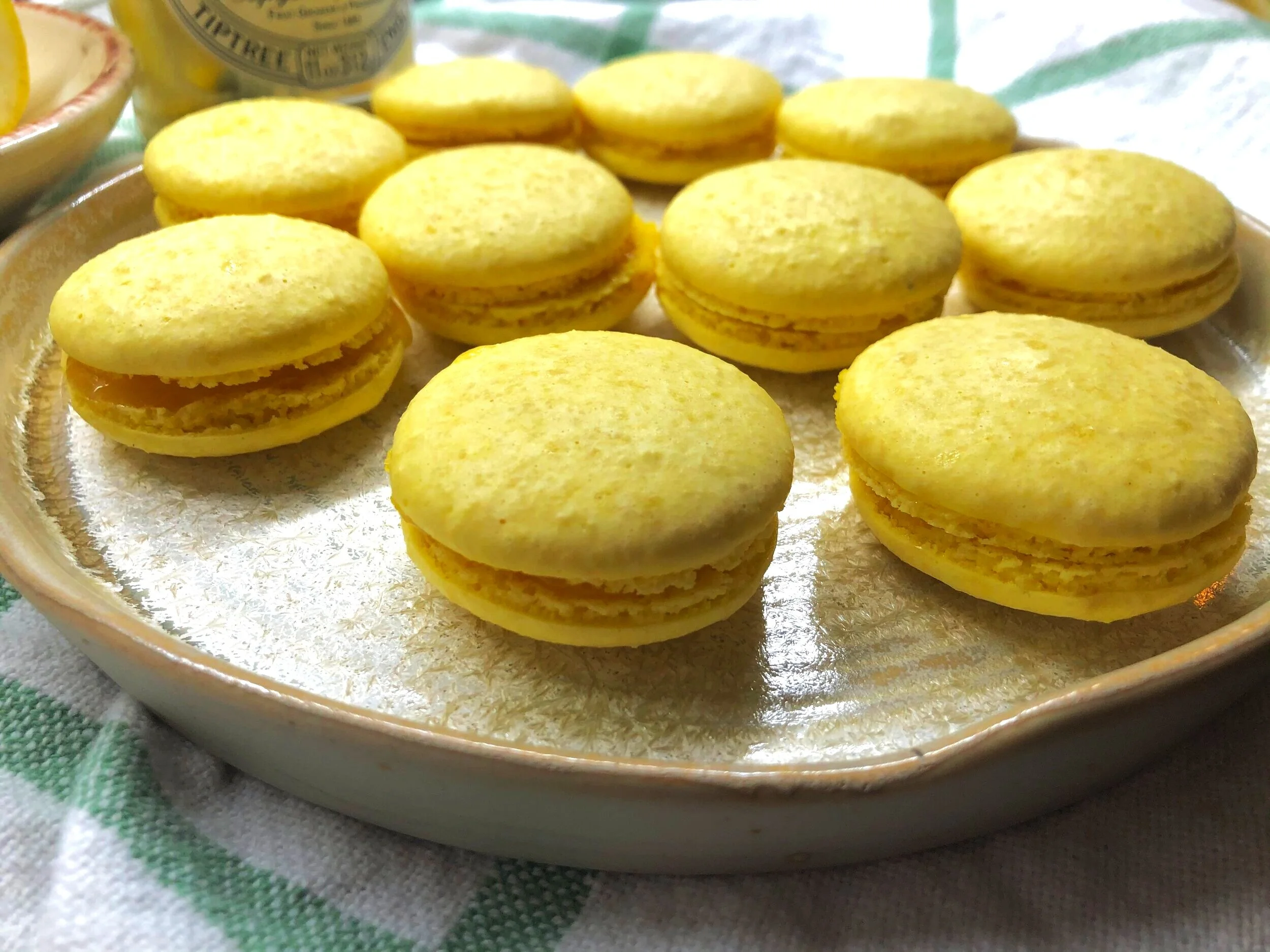Lemon Macarons

Macarons are one of those baking projects that can seem insurmountable, like croissants or Kouigns-amann (neither of which have I perfected by the way.) If you’re like me, the first few attempts may be a total failure. And just when you think you’ve finally got the hang of it it, the shells will crack when you try to remove them from the pan or you’ll realize they’re hollow or bumpy. But don’t give up! After a bit of practice, you’ll get the feel for it and will be on your way to cranking out batch after perfect batch - and no longer have to shell out a ridiculous amount of money for a couple beautiful treats - or as my younger son referred to them before he knew their name “rainbow turtles.”
This recipe has been adapted from Natalie Wong’s wonderful book, French Macarons for Beginners.
Ingredients:
70 grams almond flour
50 grams powdered sugar
Pinch of salt
Zest of 1/2 small lemon
53 gram egg whites (see note)
50 grams granulated sugar
1/4 tsp. cream of tartar
2-3 drops yellow gel food coloring
1/2 cup store-bought lemon curd
Directions:
Sift dry ingredients: Sift the almond flour, powdered sugar, salt and lemon zest in medium bowl
Whip egg whites & granulated sugar to stiff peaks: Place egg whites and cream of tarter in the bowl of a stand-up mixer and beat on medium speed until frothy, about one minute. Slowly stream in the granulated sugar and increase speed to medium-high. Continue to beat until stiff peaks form. (This is is a crucial step. You want stiff, not soft peaks, but be careful not over-mix.) Add yellow food gel and beat until combined, about another minute.
Macaronage: Using a rubber spatula, carefully fold 1/3 of the almond flour mixture into the egg whites by scraping the spatula underneath the batter, while gently folding until dry ingredients are fully incorporated. Repeat with the remaining two batches. Continue to gently fold until the mixture has the consistency of lava. It should be thick, but slowly flow. You can check by dropping a spoonful of batter into the mixture and counting to ten. If it takes 10 seconds for the the edges of the ribbon incorporate back into the batter, it is ready! (This stage is extremely tricky. The first few times I was afraid of over-mixing the dough and as a result, my batter was too thick, resulting in hollow shells that cracked. During the macaronage phase, you are trying to gently fold the dry ingredients in while also folding some - but not too much! - of the air out. Folding to just the right “lava-like” consistency is key to piping perfect macaron shells.)
Pipe the batter: Line a baking sheet with a silicone mat, preferably one that has a template (something like this.) Transfer the batter to a pastry bag with a #12 tip. Holding the pastry bag perpendicular to the baking sheet, pipe 24 circles, approximately 1.5 inches in diameter, spaced 1.5 inches apart. Then, pick up the pan and let it drop in the counter 2-3 times to make sure there are no remaining air bubbles in the batter.
Allow macaron batter to dry: Let the macaron batter dry at room temperature until the tops the tops are no longer sticky. Depending on the humidity, this could take anywhere between 30-60 minutes.
Bake macaron shells: Preheat oven to 300°F. Bake for 15-18 minutes until the shells are set. You can check by gently touching the top - if it jiggles, it’s not quite done. Though you don’t want them to brown, it is better to have a slightly overdone shell to an underdone one.
Fill: Allow the macaron shells to cool on the baking sheet for at least 10 minutes, then transfer them to a clean work surface. Take one shell in your hand and using either a small spoon or piping bag, fill with approximately 1 tsp. of lemon curd. Take another shell and gently press together. Repeat with remaining shells. And voila! You’ve made macarons.
Note: Do not use egg pasteurized carton egg whites as they will not whip up correctly.





